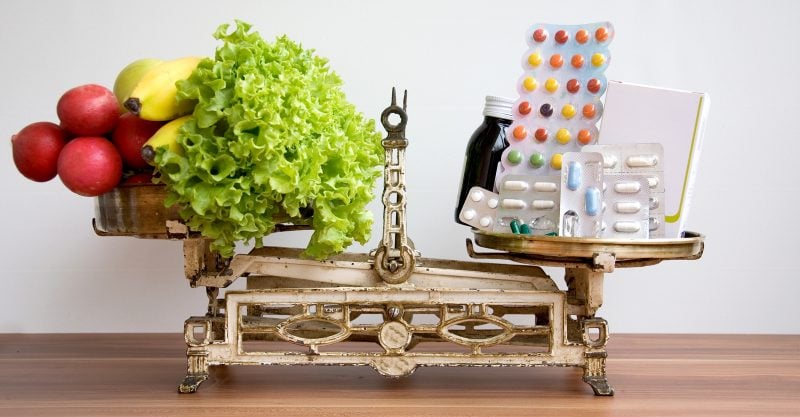
This is an excellent start on this problem. So called industrial farming has so far been about mostly about direct exploitation while shoveling serious agricultural costs into the ditch or into the next generation.
A real cost accounting applied to all this is the best tool available to thwart policy makers and exploitive corporate interests who have every incdentive to ignore those costs.
Sadly agriculture is no mining proposition. Recall a mining proposition has a natural lifespan and all costs dumped into the fure there often get reclaimed by nature. Centuries even if that is what is necessary. We are still fixing the natural abandonment of the 49ers. Yet it is less every year that passses.
Farming has to be forever, because it is all part of Terra Forming Terra.
New Book Explores Hidden Costs of Broken Food System
“True Cost Accounting for Food: Balancing the Scale,” written by farmers, researchers, scientists and other experts, provides a new lens through which to understand the true social, human, economic and environmental costs of food.
By Food Tank
The Defender is experiencing censorship on many social channels. Be sure to stay in touch with the news that matters by subscribing to our top news of the day. It's free.
“True Cost Accounting for Food: Balancing the Scale,” addresses the unseen costs of a broken food system. The new book suggests that a better food system is possible if the true cost of food is taken into account during every step of the supply chain, from farm to rubbish bin and beyond.
“True Cost Accounting for Food” provides a new lens through which to understand the social, human, economic and environmental costs of food. True cost accounting is a holistic food system assessment tool intended to illuminate and measure the flows, externalities and dependencies of the food system, both negative and positive.
Edited by Dr. Lauren Baker, Paula Daniels and Dr. Barbara Gemmill-Herren, the book begins with an introduction from the trio that details the myriad factors that true cost accounting encompasses.
“Behind all the food that we eat is a vast realm of unaccounted for interactions: the diversion of water from rivers; the extraction of nutrients from soil; the discharge of pollutants to air and water; the exaction of labor to grow, manage, pick, and package; the release of carbon dioxide to transport and deliver; and so on,” they write.
“When we shine a light on these interactions it becomes clear that a 99¢ hamburger costs all of us a lot more than the dollar placed by a consumer into the hands of a cashier.”
True cost accounting is a “new economics of food and a new relationship with the land and the food that we eat, starting with a holistic view of a system out of balance and ending with a new approach to business and integrated reporting,” the editors conclude.
The book’s chapters are written by a diverse group of experts, including farmers, researchers, scientists, lawyers and other experts. Authors include Nadia El-Hage Scialabba of the UN Food and Agriculture Organization, Patrick Holden of the Sustainable Food Trust and Saru Jayaraman of One Fair Wage.
One assertion throughout the book is that true cost accounting can be used as an economic tool to research and incentivize sustainable agricultural practices.
Chapter 2, titled “Cotton in Egypt: Assisting Decision-Makers to Understand Costs and Benefits,” by Helmy Abouleish, Thoraya Seada and Nadine Greiss, details a 2020 study that compares the price of conventional versus organic farming in Egypt — a country with extreme soil erosion and drought.
“Organic food is in fact already cheaper to produce than conventional products, if the externalized costs for pollution, CO2 emissions, energy and water consumption are considered,” Abouleish, Seada, and Greiss write. “These are currently transferred to society or future generations, but if they would appear on supermarket bills, this would be evident to everyone.”
Similarly, chapter 9 explores how a true cost accounting approach may help encourage almond growers in Central California to use regenerative farming practices.
In “Foster Healthy Soils in California: Farmer Motivations and Barriers,” Authors Joanna Ory and Alastair Iles explain that the upfront cost of purchasing, planting and growing cover crops often dissuades farmers from using the technique. Less than 5% of intensive vegetable farmers along the Central California coast use cover crops.
The authors argue that growers are unaware of, or don’t understand, the environmental, social and economic benefits of cover crops. They point to improved bee health, erosion control, water filtration, carbon storage, reduced use of synthetic fertilizers and the prevention of soil health degradation. More information — and incentivizing policies — could lead to a greater uptake of sustainable agriculture practices.
Limited knowledge about the costs and benefits of the agriculture industry also impacts shoppers.
Consumers are often unaware that for every dollar they spend on food, they pay an additional dollar in hidden costs, authors Patrick Holden and Adele Jones write. Those costs can crop up as taxes to clean up polluted waterways, or as the environmental degradation that will affect future generations to come.
The book also highlights success stories of communities that have learned how to price commodities holistically.
The book’s collaborators see “True Cost Accounting for Food,” as a powerful resource for food systems change, containing solutions like sustainability investing and agricultural subsidy reform. True cost accounting “has the transformative potential to amplify the positive benefits of food systems,” editor Lauren Baker tells Food Tank.
No comments:
Post a Comment